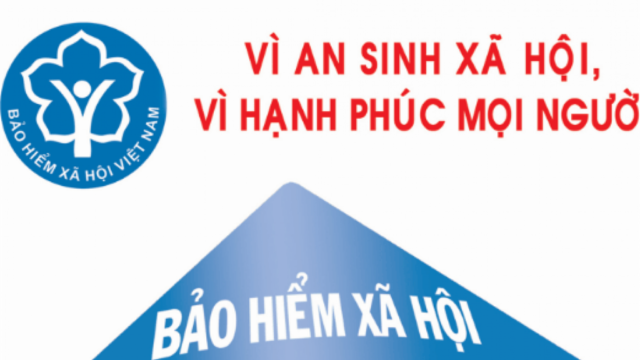Mandatory social insurance is an essential part of Vietnam’s social welfare system, protecting workers’ rights in cases of illness, maternity, occupational accidents, and retirement. Starting from 2025, the social insurance system has been updated and adjusted with significant changes aimed at enhancing benefits for workers. These new policies not only expand the groups eligible for insurance but also improve the benefits and conditions to ensure workers have a stable life when facing difficulties. This article will provide an overview of mandatory social insurance, the social insurance schemes, and the new policy changes in 2025, helping workers understand their rights and obligations better.
1. What is Mandatory Social Insurance?
Mandatory social insurance is a system mandated by the government to protect workers’ rights in cases such as illness, maternity, occupational accidents, retirement, and death. With the new changes in 2025, mandatory social insurance has been expanded and improved to meet the needs of protecting the rights of all workers in society. The regulations concerning the participants in mandatory social insurance have been clarified and applied more strictly to avoid gaps in participation.
1.1. Participants in Mandatory Social Insurance
The participants in mandatory social insurance in 2025 now include not only employees working under long-term labor contracts but also expand to cover groups of non-professional workers at communes, wards, and towns. This has been specifically stipulated in the new legal documents such as the amended and supplemented Social Insurance Law of 2024, ensuring fairness for all workers.
1.2. New Regulations on Participants in Mandatory Social Insurance
Those who participate in mandatory social insurance must meet all legal requirements and be designated under specific labor contracts, including contracts with defined or undefined terms. Notably, the participation in social insurance has also been more clearly defined for self-employed workers, workers at small companies, and cooperatives without stable labor contracts.
1.3. Benefits of Participating in Mandatory Social Insurance
When participating in mandatory social insurance, workers will enjoy important benefits such as sickness, maternity, occupational accident, and pension benefits. These benefits will be calculated based on the worker’s insured salary. Additionally, social insurance provides support to workers when facing health problems, reducing financial burdens in cases of illness or accidents.
1.4. Mandatory Social Insurance and the Social Insurance Scheme
Mandatory social insurance is a system of rights and allowances that workers are entitled to after participating in the insurance. These schemes include sickness allowances, maternity benefits, pension allowances, occupational accident allowances, and other benefits. This system helps protect and ensure the livelihood of workers in all difficult circumstances.
2. What is the Social Insurance Scheme?
The social insurance scheme consists of the benefits that workers are entitled to when participating in mandatory social insurance. These benefits provide workers with a stable financial source in situations such as illness, maternity, occupational accidents, and retirement. Since 2025, many changes have been introduced to improve the benefits and rights of workers, ensuring better protection in unfortunate situations.
2.1. Mandatory Social Insurance Schemes
Mandatory social insurance schemes include benefits such as sickness, maternity, occupational accidents, post-natal recovery, and pensions. These schemes are specifically regulated to ensure workers’ rights and create fairness in health care and welfare throughout the workers’ careers.
2.2. Benefits When Participating in the Social Insurance Scheme
When participating in social insurance, workers will receive welfare benefits suited to their health conditions and job roles. These benefits include compensation for sickness, childbirth, occupational accidents, post-natal recovery, and other allowances. Notably, from 2025, the benefits for social insurance schemes will be adjusted to better align with the economic situation and the real needs of workers.
2.3. Changes in the Social Insurance Scheme from 2025
According to the latest regulations in 2025, the social insurance scheme will be significantly improved, particularly in terms of adjusting contribution rates and benefit levels. Workers will receive sickness and maternity benefits based on their previous insured salary, enabling them to maintain stable lives during health issues. The regulations on sick leave and maternity benefits will also be updated to meet more practical needs.
2.4. Updates on New Schemes Starting from 01/01/2025
Starting from 2025, social insurance schemes will see further improvements to enhance the quality of protection for workers. One of the important changes is the strengthening of benefits for both female and male workers in cases of maternity and post-natal recovery leave, helping them receive better support in maintaining their health and stability in life.
3. Social Insurance Benefit Levels
The benefit levels of mandatory social insurance are crucial to ensuring that workers can maintain their livelihood when faced with health issues, occupational accidents, or when retiring. These benefit levels are clearly defined and calculated based on the base salary that the worker has contributed to social insurance in the months prior to the occurrence of the insured event. Starting from 2025, regulations regarding the benefit levels of social insurance have been adjusted, particularly in cases of sickness and maternity, to align with the current economic situation and the cost of living for workers.
3.1. Sick Leave Benefits
Sick leave benefits are one of the basic entitlements for workers participating in mandatory social insurance. The benefit level for sick leave is calculated based on the salary that the worker contributed to social insurance in the month immediately before the sick leave. If the leave is taken for less than a full month, the benefit will be calculated proportionally, with a cap not exceeding the amount of sick leave for one month. This ensures that workers will not suffer financial hardship during their sick leave and can maintain a minimum income when they are unable to work.
3.2. Maternity Benefits and New Changes
Maternity benefits are an important entitlement for female workers participating in mandatory social insurance. Starting in 2025, there have been many adjustments to maternity benefits to better protect the health and rights of female workers. Specifically, female workers will receive maternity allowances for the entire duration of their maternity leave, with the allowance being based on their salary from the month prior to their maternity leave. Importantly, this system also includes benefits for male workers, allowing fathers to receive a one-time allowance when their wife gives birth, if the wife is not eligible for maternity benefits.
3.3. Postpartum Recovery Benefits
Postpartum recovery benefits are applied to female workers immediately after their maternity leave ends, helping them recover their health before returning to work. According to the new regulations in 2025, if a female worker has not fully recovered after maternity leave, she may take 5 to 10 days of recovery leave. This is an important part of the social insurance system, helping female workers have enough time to regain their health and return to work effectively.
3.4. Benefits in Case of Occupational Accidents
When a worker suffers from an occupational accident, social insurance provides benefits to support treatment and health recovery costs. The benefit level for occupational accidents is calculated based on the worker’s social insurance contribution and the extent of their health impairment. The new regulations from 2025 have adjusted the occupational accident benefits to provide maximum support for workers who experience accidents or significant health impairments at the workplace.
4. New Points in Mandatory Social Insurance Policies
With the changes to the social insurance system in 2025, many new aspects have been implemented to enhance benefits for workers. These changes not only involve adjusting contribution and benefit levels but also focus on expanding the group of participants in the social insurance system and improving social welfare benefits. These changes ensure that workers are better protected in emergencies and their lives are safeguarded when they are unable to work.
4.1. Changes in the Group of Social Insurance Participants
One of the important changes in 2025 is the expansion of the group of mandatory social insurance participants. This now includes not only workers in large companies but also freelance workers and non-specialized workers at communes, wards, and towns, ensuring fairness in accessing social insurance benefits and protecting the rights of all workers nationwide.
4.2. Conditions for Receiving Mandatory Social Insurance Benefits
To ensure that all workers are fairly protected, the conditions for receiving mandatory social insurance benefits have been clearly revised. Specifically, the requirements for the duration of contributions, the contribution rate, and the eligibility for receiving benefits have been clarified in the new regulations. Workers must fully participate in the insurance during the required period to receive the full benefits from the social insurance system.
4.3. Adjustments to Contribution and Benefit Levels
From 2025, the contribution level for mandatory social insurance will be adjusted to suit the economic development and the income levels of workers. The contribution rate will be based on a percentage of the base salary, with the benefit levels calculated from the salary of the previous months before the worker’s absence. This regulation ensures that workers will have enough income during their time off and will not face financial difficulties.
4.4. Changes in Social Insurance Benefits for Male Workers
A notable change in 2025 is the expansion of social insurance benefits for male workers, especially in cases of maternity. Previously, only female workers were entitled to maternity benefits, but starting in 2025, male workers will also be entitled to a one-time allowance when their wife gives birth, provided the wife is not eligible for maternity benefits. This is a significant step forward in ensuring the rights of both men and women in the family.
Mandatory social insurance and the associated benefits are essential tools that protect workers’ health and finances throughout their working lives and in retirement. The most recent changes in 2025 have brought about significant improvements, including the expansion of the group of participants, the adjustment of contribution and benefit levels, and the protection of the rights of both male and female workers. These changes not only provide workers with a strong safety net but also promote fairness and stability in society. Understanding the regulations of mandatory social insurance will help workers maximize their benefits and ensure a stable future.
See more: Latest Guide to Registering for Social Insurance, Health Insurance, and Unemployment Insurance
For any inquiries, contact Wacontre Accounting Services via Hotline: (028) 3820 1213 or email info@wacontre.com for prompt assistance. With a team of experienced professionals, Wacontre is committed to providing dedicated and efficient service. (For Japanese clients, please contact Hotline: (050) 5534 5505).







